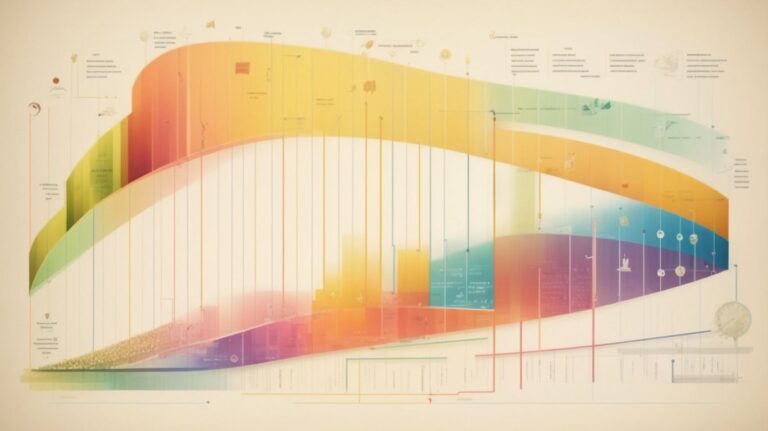Have you ever wondered how human development unfolds over time? In the field of psychology, understanding continuity and stages is essential to comprehending the complexities of our growth and evolution.
From Piaget’s Theory of Cognitive Development to Freud’s Psychosexual Stages, various theories shed light on the progression of our mental and emotional processes. Join us as we explore the different types of continuity, key theories of developmental stages, criticisms, and the impact of these theories on education and therapy.
Let’s dive into the fascinating world of human development!
Contents
- 1 What is Continuity in Psychology?
- 2 What are the Stages in Psychology?
- 3 How Do These Theories Explain Continuity and Stages in Psychology?
- 4 What Are the Criticisms of These Theories?
- 5 How Do These Theories Impact Our Understanding of Human Development?
- 6 Frequently Asked Questions
- 6.1 What is the concept of continuity in psychology?
- 6.2 What are the key theories that explain continuity in psychology?
- 6.3 How does the concept of stages relate to continuity in psychology?
- 6.4 What are some examples of stages in psychology?
- 6.5 How does the continuity perspective differ from the discontinuity perspective?
- 6.6 How does understanding continuity and stages in psychology help us in our daily lives?
What is Continuity in Psychology?
Continuity in psychology refers to the concept of gradual and continuous development over time, where changes occur steadily without distinct stages.
Contrary to this, discontinuous development suggests abrupt shifts and clear-cut stages in psychological growth. In the continuous model, individuals evolve gradually, accumulating experiences and knowledge over time, resulting in subtle transformations. This aligns with the idea that growth in humans is a dynamic and ongoing process, with changes influencing subsequent developments.
What Are the Different Types of Continuity?
Different types of continuity in psychology include continuous development without distinct stages and continuous development with identifiable stages.
Continuous development without distinct stages is characterized by a steady and gradual progression without clear boundaries or milestones. This type of continuity highlights the ongoing nature of growth and change, with development occurring as a smooth, uninterrupted process.
In contrast, continuous development with identifiable stages acknowledges the presence of specific phases or periods within the overall progression. These stages represent more structured transitions, where individuals may exhibit distinct behaviors, skills, or characteristics before moving on to the next stage.
What are the Stages in Psychology?
Stages in psychology refer to distinct phases of development where individuals experience specific milestones in cognitive and language development.
These stages are crucial as they lay the foundation for how individuals perceive and interact with the world around them.
- During early childhood, children progress from simple babbling to forming complex sentences, demonstrating a key language milestone.
- Similarly, cognitive development in adolescence involves abstract thinking and problem-solving abilities.
Each stage builds upon the previous one, paving the way for higher-level skills and understanding. This continuous progression showcases the dynamic nature of psychological growth.
What Are the Key Theories of Developmental Stages?
Key theories of developmental stages in psychology include Vygotsky’s Sociocultural Theory and Bronfenbrenner’s Bioecological Theory, emphasizing the influence of social systems on individual growth.
In Vygotsky’s Sociocultural Theory, the focus is on the role of social interaction and cultural influences in shaping cognitive development. This theory underscores the idea that learning is a social process, and individuals learn best through collaboration and interaction with others.
On the other hand, Bronfenbrenner’s Bioecological Theory delves into the interconnected layers of systems that impact an individual’s development, spanning from the microsystem to the macrosystem. These theories offer valuable insights into how external factors and environments play a crucial role in shaping an individual’s growth and behavior.
How Do These Theories Explain Continuity and Stages in Psychology?
These theories elucidate how continuity and stages in psychology are intertwined, showcasing how cognitive and language development progress through various phases.
Vygotsky’s Sociocultural Theory emphasizes the role of social interaction in cognitive development, suggesting that individuals build their understanding through interactions with more knowledgeable others. This theory highlights the importance of cultural and societal influences on a person’s cognitive growth.
On the other hand, Bronfenbrenner’s Bioecological Theory focuses on the interconnected systems of influence on a child’s development, such as the microsystem, mesosystem, exosystem, and macrosystem. These theories provide a framework to understand how gradual changes and qualitative shifts occur as individuals navigate through different stages of cognitive and language development.
Piaget’s Theory of Cognitive Development
Piaget’s Theory of Cognitive Development posits that individuals progress through distinct stages of cognitive growth marked by qualitative changes in thinking and understanding.
According to Piaget, these cognitive stages include the sensorimotor stage, the preoperational stage, the concrete operational stage, and the formal operational stage. Each of these stages represents a unique way in which individuals perceive and interpret the world around them.
In the sensorimotor stage, which typically occurs from birth to about 2 years old, infants learn about their environment through their senses and actions. This stage is characterized by the development of object permanence, which is the understanding that objects continue to exist even when they are out of sight.
The preoperational stage, from about 2 to 7 years old, is marked by the emergence of symbolic thought and language development. Children in this stage often demonstrate egocentrism, where they struggle to see things from another person’s perspective.
In the concrete operational stage, around 7 to 11 years old, children begin to think more logically about concrete events and understand principles of conservation. This is when they start to grasp concepts like reversibility and begin to classify objects based on different characteristics.
- The formal operational stage, which typically begins around age 11 and continues through adulthood, is characterized by abstract thinking and hypothetical reasoning. Individuals in this stage can think about possibilities, systematically test hypotheses, and engage in more advanced problem-solving.
Throughout these stages, individuals progress in their cognitive abilities, moving from a more limited, egocentric view of the world to a more comprehensive and adaptable mode of thinking.
Erikson’s Theory of Psychosocial Development delineates the stages individuals navigate across the lifespan, focusing on emotional growth and the resolution of psychosocial conflicts.
One of the key concepts in Erikson’s theory is the notion of psychosocial stages. These stages, starting from infancy to old age, present specific challenges that individuals must overcome to advance successfully to the next stage. For example, in the adolescence stage, the conflict between identity versus role confusion emerges as teenagers seek to establish a sense of self and independence. This period is crucial in shaping one’s identity and interpersonal relationships.
Kohlberg’s Theory of Moral Development
Kohlberg’s Theory of Moral Development outlines stages of moral reasoning individuals progress through, emphasizing the evolution of ethical thinking and decision-making.
According to Kohlberg, there are six identifiable stages that individuals move through to develop their moral reasoning and understanding of ethical principles.
Moral growth is seen as a gradual process where people progress from a basic understanding of right and wrong to a more complex consideration of societal norms and values.
These stages reflect a cognitive shift in how individuals perceive and interact with moral dilemmas, moving from a self-centered perspective to a broader, more universal viewpoint.
Freud’s Psychosexual Stages of Development
Freud’s Psychosexual Stages of Development delineate how individuals progress through key stages marked by the resolution of psychosexual conflicts and the formation of personality.
During the oral stage, which typically occurs from birth to 1 year, the primary focus is on breastfeeding and oral stimulation. If an individual faces unresolved conflicts during this stage, it can lead to fixation, resulting in behaviors such as dependency or aggression.
Moving on to the anal stage, around 1 to 3 years, toilet training becomes central. Conflicts related to this stage can manifest as anal retentiveness or anal expulsiveness.
The phallic stage, between 3 to 6 years, brings about the Oedipus or Electra complex and plays a pivotal role in gender identity formation.
What Are the Criticisms of These Theories?
Criticisms of these theories include concerns about the lack of cultural and gender diversity representation, overgeneralization of stages, and neglect of environmental influences.
These key developmental theories, such as Piaget’s cognitive development theory and Erikson’s psychosocial stages, have long been under scrutiny for their limited scope in addressing the complexities of human development. Critics argue that the emphasis on universal stages fails to acknowledge the diverse experiences and environments in which individuals grow and evolve. There is a tendency to overlook the impact of cultural norms, societal structures, and individual differences in shaping developmental pathways.
Cultural biases within these frameworks often lead to a skewed understanding of human development, favoring certain groups over others and perpetuating stereotypes. Similarly, the gender biases inherent in these theories can contribute to the reinforcement of traditional gender roles and expectations, further limiting the inclusivity of the developmental models.
Lack of Cultural and Gender Diversity
One criticism leveled against developmental theories is the lack of diversity in accounting for cultural and gender influences on human growth and development.
These theories often stem from Western perspectives, which may not fully encapsulate the complexities of various cultural norms and values that shape individual experiences.
The emphasis on gender within these frameworks tends to lean towards binary understandings, overlooking the spectrum of gender identities that exist and how they intersect with other aspects of identity.
Therefore, it is vital for developmental theories to evolve and incorporate a more inclusive lens that considers the rich tapestry of cultural diversity and the nuanced ways in which gender impacts human development.
Overgeneralization of Stages
Another critique of developmental theories is the tendency to overgeneralize stages, assuming uniform progression across individuals without accounting for variations in development.
While traditional developmental theories categorize individuals into distinct stages based on age or specific milestones, it is important to recognize that each person’s journey is unique and influenced by a myriad of factors, such as culture, environment, and personal experiences. Human development is a complex and dynamic process, shaped by multifaceted interactions rather than fitting neatly into predetermined stages.
Neglect of Environmental Factors
Critics point out the neglect of environmental factors in many developmental theories, highlighting the essential role of external influences in shaping human growth and adaptive skills.
Understanding how the environment impacts development is crucial for comprehending the complexities of human behavior. Research shows that environmental factors, such as family dynamics, socio-economic status, and cultural influences, play a significant part in shaping cognitive abilities and social behaviors.
Environmental contexts create the foundation on which individuals build their understanding of the world, form relationships, and learn to adapt to different situations. Ignoring these factors can lead to oversimplified or incomplete theories that fail to capture the full scope of human development.
How Do These Theories Impact Our Understanding of Human Development?
These theories shape our comprehension of human development by influencing educational practices, parenting strategies, research methodologies, and therapeutic interventions, highlighting the interplay between continuity and developmental stages.
Understanding human development through the lens of developmental theories not only provides insights into how individuals grow and change over time but also serves as a roadmap for educators to tailor teaching techniques to different age groups. Parents can utilize these theories to better understand their child’s behaviors and needs, fostering a supportive environment for healthy development.
In research, developmental theories guide the design of studies, helping researchers investigate the intricate processes that underlie human growth and behavior. By considering both continuity and stage-based perspectives, they offer a comprehensive framework for analyzing longitudinal data and exploring changes over the lifespan.
In therapy contexts, these theories inform interventions by emphasizing the importance of addressing developmental challenges and milestones at appropriate stages. Therapists can tailor treatment plans to individuals’ developmental needs, promoting psychological well-being and personal growth.
Implications for Education and Parenting
These theories offer insights into effective educational approaches and parenting practices that support cognitive and language development in children, emphasizing the importance of scaffolding and responsive caregiving.
When we delve into Vygotsky’s Sociocultural Theory, a key principle lies in the concept of the zone of proximal development – the gap between what a child can accomplish independently and what they can achieve with guidance. This idea underscores the role of educators and parents in providing just enough support to help children reach their full potential, promoting not only cognitive growth but also fostering language skills. By incorporating this theory into educational strategies and parenting interactions, adults can effectively nurture children’s development by offering opportunities for learning within their reach but slightly challenging.
Influence on Research and Therapy
These theories influence research methodologies and therapeutic interventions by providing frameworks to study cognitive and language development, guiding the design of interventions that promote adaptive skills and social-emotional growth.
By gaining insights from developmental theories, professionals in the fields of psychology and education can better understand how individuals acquire language and process information, informing the creation of interventions tailored to specific developmental stages.
These theoretical perspectives help researchers explore the interconnectedness between cognitive abilities and emotional intelligence, offering a comprehensive approach to designing treatments that address the holistic needs of individuals.
Through integrating developmental theories into research paradigms, professionals can refine their therapeutic modalities to foster positive outcomes in areas such as social interaction, behavior modification, and cognitive enhancement.
Importance of Considering Both Continuity and Stages in Psychology
Recognizing the value of integrating both continuity and stage-based perspectives in psychology is essential for capturing the complexity of cognitive and language development, acknowledging the gradual changes and qualitative shifts individuals experience.
When considering cognitive and language development, it becomes apparent that viewing these processes through solely a continuity or stage-based lens limits our understanding. By embracing both frameworks, psychologists can delve deeper into how individuals progress over time.
Continuity allows us to appreciate the subtle yet significant shifts that occur continuously, while stage-based frameworks highlight the distinct milestones and transitions individuals navigate. This integration provides a more holistic view, revealing the intricate interplay between gradual changes and qualitative transformations in the realm of psychological analysis.
Frequently Asked Questions
What is the concept of continuity in psychology?
Continuity in psychology refers to the idea that development and behavior are a continuous process, meaning that there is a smooth and gradual transition from one stage to another. This perspective views development as a seamless progression rather than a series of distinct stages.
What are the key theories that explain continuity in psychology?
Some of the key theories that explain continuity in psychology include behaviorism, cognitive development, psychodynamic theory, and humanistic theory. Each of these perspectives offers a unique explanation for how individuals develop and change over time.
How does the concept of stages relate to continuity in psychology?
The concept of stages in psychology refers to the belief that development occurs in a series of distinct and predictable stages. While some theories emphasize the importance of stages, others view development as a continuous process with no clear demarcation points.
What are some examples of stages in psychology?
Sigmund Freud’s psychosexual stages and Jean Piaget’s cognitive development stages are two well-known examples of stage theories in psychology. These theories propose that individuals progress through specific stages of development in a set sequence.
How does the continuity perspective differ from the discontinuity perspective?
The continuity perspective in psychology suggests that development is a gradual and continuous process, while the discontinuity perspective proposes that development occurs in distinct stages with abrupt transitions between them. These two perspectives offer differing views on how individuals develop and change over time.
How does understanding continuity and stages in psychology help us in our daily lives?
Understanding continuity and stages in psychology can help us make sense of our own development and behavior, as well as the development and behavior of others. It can also provide insight into how to best support and promote healthy development in ourselves and others.



